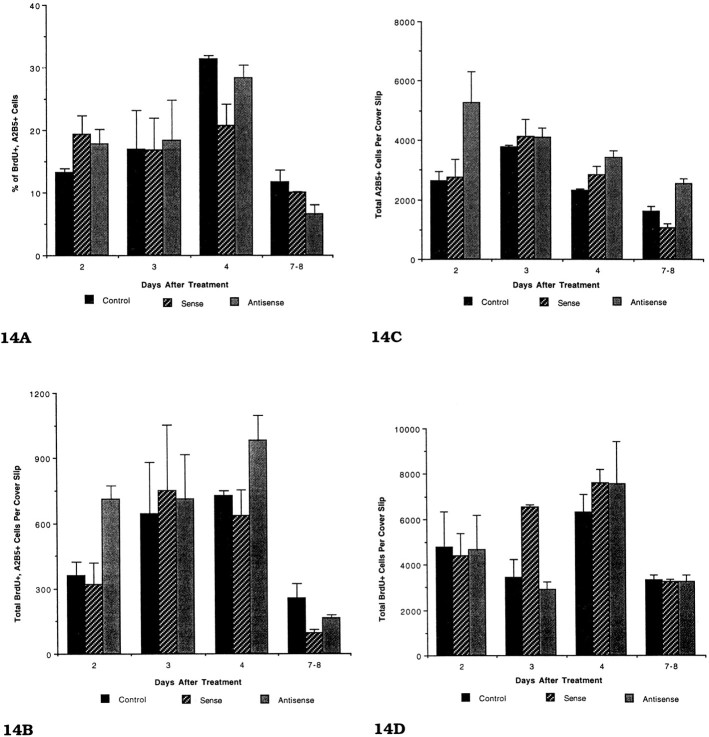Fig. 14.
The effects of sense and antisense 23-mer S-ODNs on proliferation of OL progenitors (A–C) and ASs (D). Cells were incubated with 10 μm BrdU for 24 hr; they were immunostained first with the A2B5 antibody, fixed, and immunostained for BrdU. All of the A2B5+ cells per coverslip were counted. Each time point is the mean ± SE, based on at least three experiments. The same data were used for preparing Figure 14B–D. No statistical differences were found for the different groups (Fig.14A–D) using an unpaired one-tailed t test. B, The effects of sense and antisense 23-mer S-ODNs on the total number of proliferating (BrdU+) OL progenitors (A2B5+) after a 7–8 d exposure. C, The effects of sense and antisense 23-mer S-ODNs on total numbers of A2B5+ cells per coverslip after a 7–8 d exposure. D, The effects of sense and antisense 23-mer S-ODNs on the total number of BrdU+ cells per coverslip. A comparison of the total number of proliferating A2B5+ cells (Fig. 14B) with the total number of proliferating glia shows that the vast majority of proliferating cells on the coverslips is astrocytes. The PLP antisense has no apparent significant effect on either AS or OL proliferation, as compared with control and sense-treated cultures.

